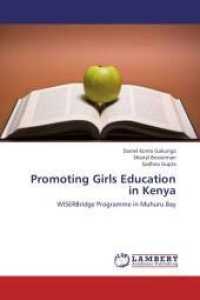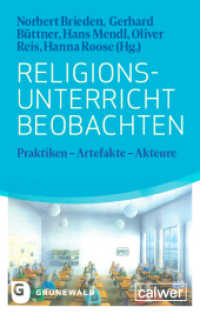- ホーム
- > 洋書
- > ドイツ書
- > Mathematics, Sciences & Technology
- > Mathematics
- > probability calculus, stochastics, mathematical statistics
Full Description
This textbook presents methods and techniques for time series analysis and forecasting and shows how to use Python to implement them and solve data science problems.








